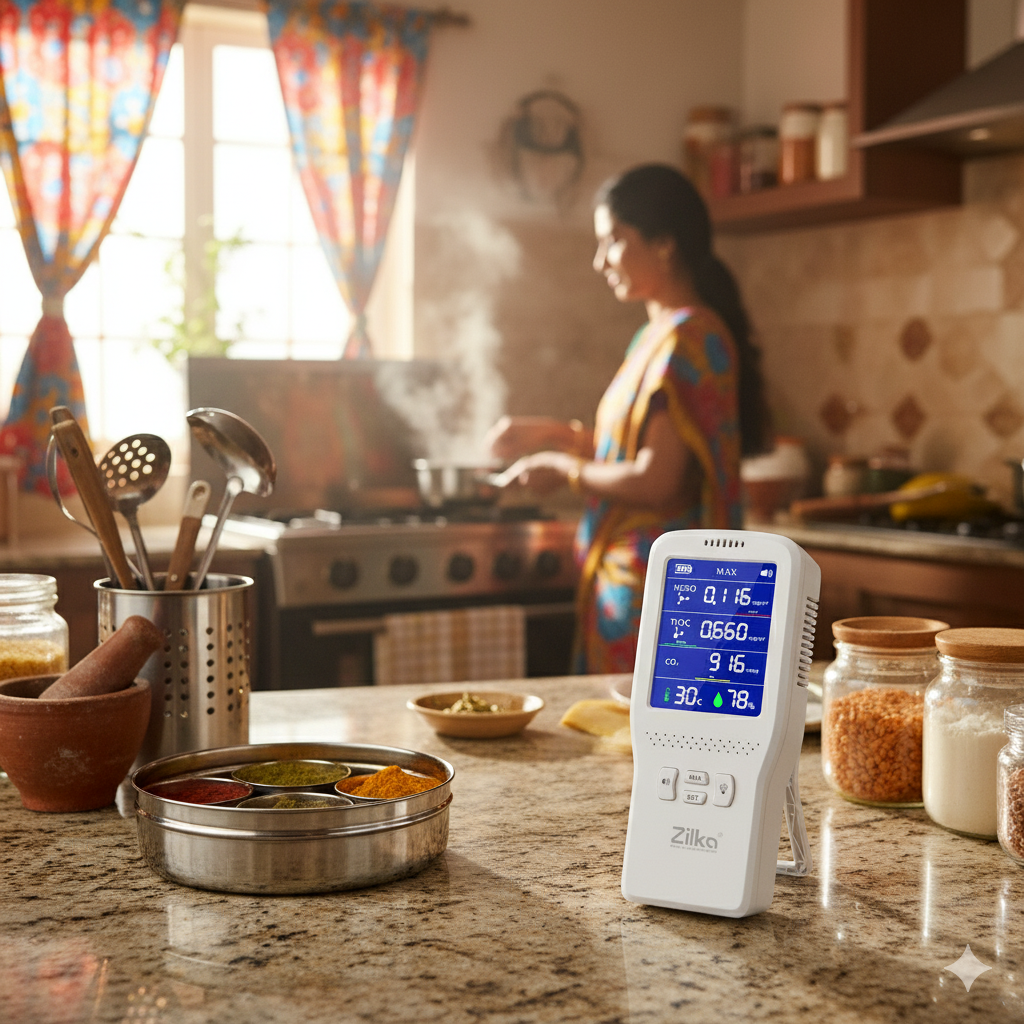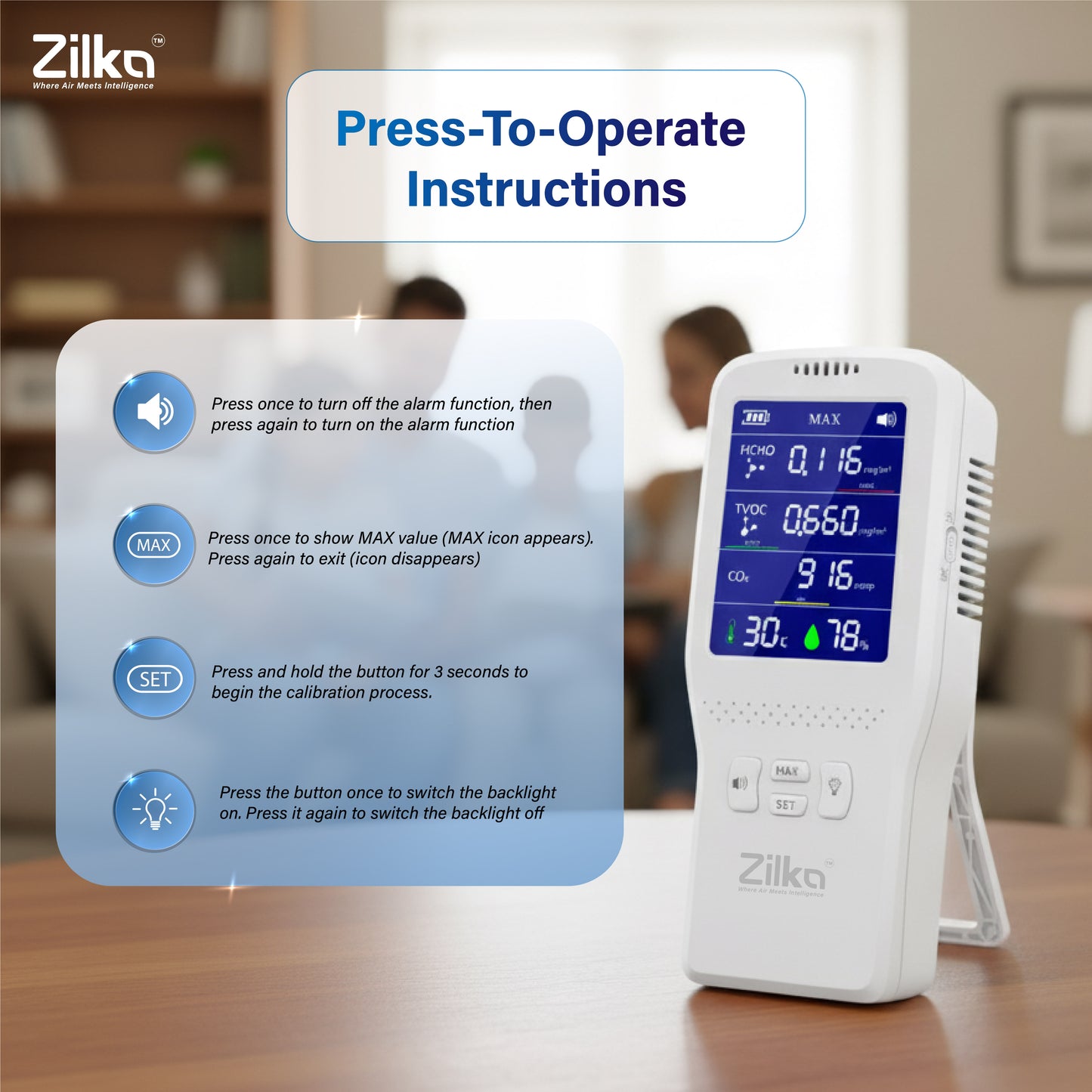
The Unsung Hero & The Silent Threat: Why Every Indian Kitchen Needs an Air Quality Monitor
The Indian kitchen is more than just a place to cook; it's the heart of the home. It's where generations-old recipes come alive, where families gather for chai and conversation, and where the rich aromas of spices waft through the air, promising delicious meals to come. From sizzling tadkas to freshly baked rotis on an open flame, the Indian culinary experience is a sensory delight.
But beneath the surface of these comforting traditions lies a potential silent threat to our health: indoor air pollution. And that's where an unsung hero, the Air Quality Index (AQI) monitor, comes into play.
The Aromatic Reality: What's Really in Our Kitchen Air?
Indian cooking, while incredibly flavorful, often involves techniques that can significantly impact indoor air quality:
-
High-Heat Cooking: Frying, deep-frying (think pakoras and samosas!), and sautéing at high temperatures release particulate matter (PM2.5, PM10), volatile organic compounds (VOCs), and other harmful gases into the air.
-
Open Flames & Grilling (Tandoor/Chulha): Many homes, especially in rural areas, still use traditional chulhas (clay stoves) or even small tandoors. While charming, these produce significant amounts of smoke, carbon monoxide (CO), and particulate matter if not properly vented. Even modern gas stoves emit nitrogen dioxide (NO₂) and carbon monoxide.
-
Spices & Ghee: While delightful, the act of roasting spices or heating ghee can also contribute to airborne particles and aerosols.
-
Inadequate Ventilation: Many Indian kitchens, particularly in older apartments or smaller homes, might lack sufficient ventilation, trapping pollutants indoors. Chimneys and exhaust fans are crucial but might not always be powerful enough or regularly maintained.
These pollutants, often invisible and odorless, can lead to a range of health issues, from immediate symptoms like eye irritation, headaches, and respiratory discomfort to long-term problems such as asthma, bronchitis, and even more serious cardiovascular and lung diseases. Children and the elderly are particularly vulnerable.
Enter the AQI Monitor: Your Kitchen's New Best Friend
This is where an AQI monitor, like the Zilka device we recently discussed, becomes indispensable. It's not just a fancy gadget; it's a vital tool that provides real-time insights into the air you and your family are breathing.
What an AQI Monitor (Zilka 11-in-1 Air Quality Monitor) Tells You (and Why it Matters for Indian Cooking):
-
PM2.5/PM10: These tiny particles, often generated from frying and open flames, can penetrate deep into your lungs. An AQI monitor alerts you when these levels spike, indicating the need for better ventilation.
-
VOCs (Volatile Organic Compounds): Emitted from cooking oils, cleaning products, and even certain spices, VOCs can be harmful. Your monitor will show if these levels are elevated.
-
CO (Carbon Monoxide): A silent killer, CO is produced by incomplete combustion in gas stoves or traditional chulhas. Critical to monitor, especially if your ventilation isn't top-notch.
-
CO₂ (Carbon Dioxide): While not directly toxic in kitchen scenarios, high CO₂ levels often indicate poor ventilation, meaning other harmful pollutants are also likely building up.
-
HCHO (Formaldehyde): While less directly linked to cooking, it can be present from furniture, cleaning products, or even certain fuel combustion.
Practical Steps for a Healthier Indian Kitchen:
Once you have an AQI monitor, you can take informed action:
-
Maximize Ventilation:
-
Use your exhaust fan/chimney religiously: Turn it on before you start cooking and leave it on for 10-15 minutes after.
-
Open windows: Create a cross-breeze whenever possible, even in winter.
-
Consider an air purifier: For persistent issues or smaller kitchens, an air purifier with a HEPA filter can be a game-changer.
-
-
Maintain Appliances:
-
Clean your chimney filters regularly to ensure optimal performance.
-
Ensure your gas stove burners are clean and operating efficiently.
-
-
Be Mindful of Cooking Methods:
-
While we won't give up our fried delights, consider minimizing deep-frying on a daily basis.
-
Use lids on pots and pans to reduce emissions.
-
-
Monitor & Adapt:
-
Observe your monitor during cooking: Notice which dishes or cooking methods cause spikes in pollutants. This helps you identify problem areas.
-
Act when levels are high: If your monitor shows poor air quality, immediately increase ventilation.
-
Awareness: Just knowing what's in the air empowers you to make healthier choices for your family.
-










